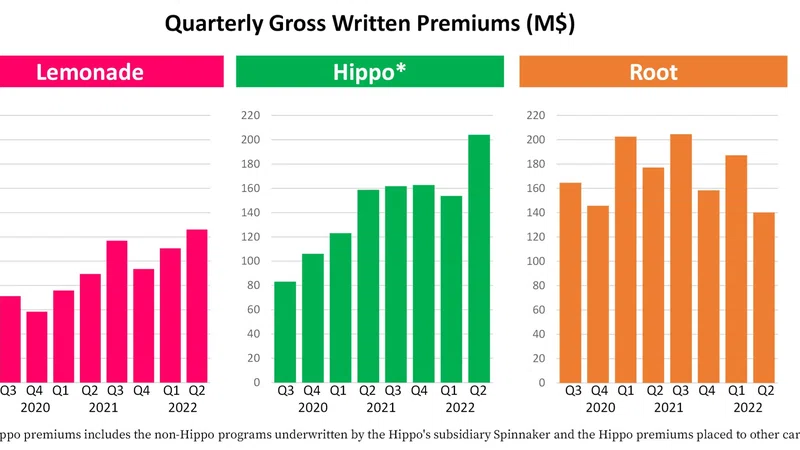Throughout history, financial services regulation has come about in times of panic, in response to one crisis or another. Most recently the financial crisis of 15 years ago led to significant regulation of the derivatives market, reducing risk throughout the sector and rebuilding trust in financial services globally. But was this regulation, like so many before it, a net positive strategic change, or a band-aid approach to managing risk?
Impressive Progress
Financial services regulation has changed fundamentally over the past 15 years. Better global collaboration has addressed many of the concerns regarding a lack of consistency between jurisdictions, with regulators and industry participants making good progress in achieving equivalence. The market – and individual players – are now far more resilient due to both ‘too big to fail’ precautions, and the shift away from decentralised bilateral transactions with the introduction of central clearing.
Regulators have far more visibility than they used to, such as with derivatives trade reporting, ensuring fast insight into evolving risks. Add in capital and margin requirements, and you have far more strictures in place around giving and receiving of collateral to protect market participants. Furthermore, regulators are not doing this alone; financial institutions are increasingly imposing their own additional compliance demands. For example, following the September 1st deadline for Phase 6 of Initial Margin, even those entities that do not fall under the regulatory demand for additional remediation may now be expected by financial institutions to provide buffer collateral if they want to continue to trade at the same pricing levels.
This stronger push to meet community expectations is in direct response to escalating market risks. With heightened concerns around crypto, geopolitical instability and global inflation, financial institutions are looking over the horizon and beginning to agree additional safeguards between themselves.
Evolving Crises
Questions remain, however, as to whether the changes made over the past 15 years will deliver the desired resilience in the face of a different set of financial crises. Markets are increasingly unsettled, not least due to the extraordinary pace of change. Over the past year, cryptocurrencies have experienced incredible volatility. 23% of European hedge funds hold crypto assets in their funds[1], yet since November 2021 the market has seen a reduction of more than USD$1 trillion with more than $200 billion of that being lost recently due to the crash of Luna.
There’s no doubt the event has caused confidence in the space to decrease, and proved the need for increased regulation to protect consumers, not only for crypto but also government digital currencies. The decentralised nature of cryptocurrency is at odds with the centralisation that has been the foundation of regulatory change over the past few years. Ensuring regulatory oversight and appropriate regulation will bring this asset class far closer to traditional banking, and into the mainstream.
Digital assets are not the only crisis on the horizon. Geopolitical instability continues to undermine market confidence, and inflationary pressures are creating significant unpredictability. Critically, the era of cheap money has lasted decades: many individuals have no experience of high interest rates and do not know how to respond. How well protected is the industry against irrational behaviour from players unfamiliar with this set of financial circumstances?
Achieving Global Stability
We can identify the risks, but it is more difficult to predict how and where the next crisis will develop. Fortunately, we have significant advantages in 2022 compared to the position in 2007/8. Not only has regulation added resilience to the market, but over the past two decades data has become the new religion. Both regulators and institutions have recognised the vital importance of understanding and managing legal data for day-to-day operations and essential crisis response.
Diverse trusted data flows have enabled a very different regulatory approach. Regulators and central clearing houses have access to data from multiple sources. Regulators are sharing data with other organisations, including tax offices. As a result, regulators can be far more specific and timely with inquiries.
Many institutions have also evolved beyond a regulatory-specific approach to data collection and management and are exploring data to drive tangible business benefit. A significant proportion of financial institutions, however, is still operating on outdated models - models that not only add cost but will constrain their ability to respond. Why negotiate contracts by attaching a Word document to an email, where it is then updated by the counterparty and returned, when the entire process can be achieved seamlessly in the cloud by securely sharing a link, in a way that is transparent and visible to all relevant stakeholders?
Utilising platforms to hold information (rather than shared drives or MS Outlook folders) is driving positive behavioural change, including better contract lifecycle management. Enhancing the quality of legal data is ensuring institutions have far better insight into their exposure; it is allowing better dialogue with regulators; and supporting greater collaboration across the business. It is this data that will be key to ensuring institutions are best positioned to weather the next crisis.
New Era
Combining this data-driven approach with increasing global coordination between regulators will help the industry move towards a consistent international framework that will further counter volatility and instability. While true global regulator coordination is still a long way off, regulators are becoming more assertive and leveraging their information resources in a far more relevant way.
This information is also supporting a shift in mindset away from absolutes towards a more nuanced approach that reflects the nature of legal opinion. Legal advisors do not deal in absolutes – and being compelled to do so affects the risk assessment. Close-out netting is a good example: under the current regulatory framework, netting is either on or off. But this is a legal judgement, and it would be interesting to allow room for greater interpretation in the way regulators allow institutions to operate, and clearer treatment of non-nettable transactions and branches.
The market is driving that change. The investment in automation and netting engines, for example, is providing a chance to move forward, to use data to both mitigate internal risk and reinforce the importance of regulatory capital and close-out netting in addressing global financial risk. As with the margin requirements outlined above, industry players are coming together to find solutions - not only ahead of the regulator but also a less prescriptive approach that better reflects market risk and operational requirements.
Conclusion
Without any doubt, regulatory change has improved financial resilience. Regulators and the financial industry have done a marvellous job of achieving major structural change, protecting companies against insolvency, improving transparency and adding collateral to improve protection against failure.
The COVID-19 pandemic did not tip the global market into financial crisis. The war in Ukraine continued for six months before inflation began to spike and recession became more likely. Whether these regulations can hold off the next crisis and, instead, create a series of minor tremors rather than a massive seismic event is yet to be seen.
Additional challenges lie ahead. And while the market has also learnt from the lack of global coordination that undermined the response to the 2007/8 crisis and the reliance on tactical solutions to meet unachievable deadlines, it is essential to build on the depth of digital data resources now available. Although existing data quality does threaten to slow down progress of internal initiatives, firms and regulators are at least starting to understand the importance of digital data resources and planning to address these issues.
If financial regulations are to continue to improve stability and reduce investor risk in the face of emerging crises, it is vital that the industry takes advantage of the new data era and the availability of both information and systems that can transform our understanding of risk, and support intelligent response.
--
[1] https://www.fidelitydigitalassets.com/sites/default/files/documents/2021-digital-asset-study_0.pdf pg 11












